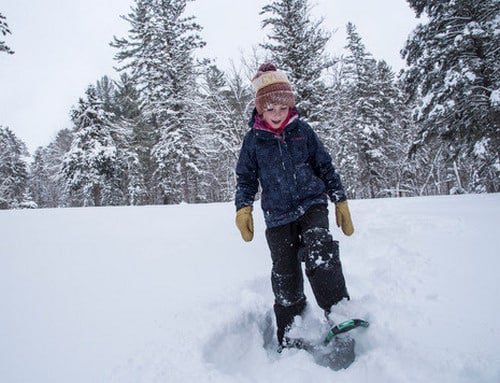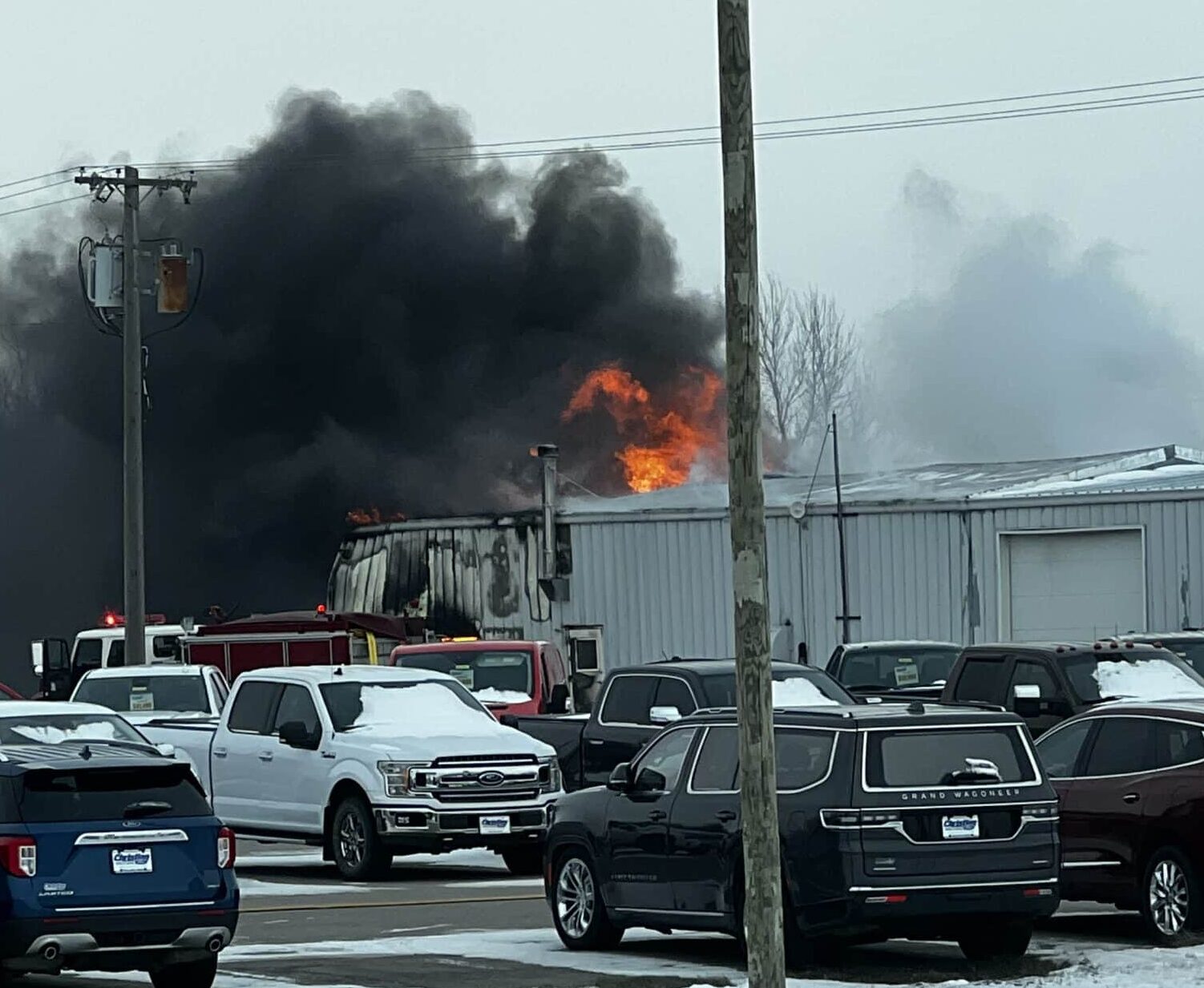Snowshoeing is the perfect way to beat cabin fever, bringing people outside for fresh air and providing a connection with nature that benefits physical and mental health. Snow came late to Minnesota this year, and although there are still areas of the state with little snow cover, there are also many locations in northern and southwest Minnesota with enough snow for snowshoeing. There are many opportunities to participate in snowshoeing on state lands managed by the Minnesota Department of Natural Resources.
Exploring snowshoes is not only great exercise; it is a way to see areas of parks, forests, and other lands that aren’t accessible in summer. When the ground is snow-covered, it’s safe to wander off the trail without the risk of trampling sensitive plants or spreading invasive species by picking up seeds of invasive plants on footwear.
The recreation compass tool is an easy way to find locations for snowshoeing. All types of DNR-managed lands listed below are included on the Recreation Compass map (mndnr.gov/maps/compass.html)
Here are places to enjoy snowshoeing on state lands this winter:
State parks, recreation areas, and trails
Snowshoeing is allowed at all state parks, recreation areas, and trails. Visitors can snowshoe anywhere except on trails groomed explicitly for another activity, such as cross-country skiing or snowmobiling.
Many state parks offer snowshoe rentals for $6 per day. Details are available on the DNR’s state parks snowshoeing webpage (mndnr.gov/state_parks/snowshoeing.html).
Some parks and trail locations offer snowshoeing programs like guided walks and wildlife watching. Participants in these programs are provided with snowshoes if they don’t have their own. To ensure there are enough snowshoes for all participants, many of the programs require advance registration. Most programs are free; more details are available on the DNR’s parks and trails event calendar (mndnr.gov/ptcalendar).
Six locations for those new to the activity offer snowshoeing programs specifically geared toward beginners: Afton, Fort Snelling, Itasca, and Mille Lacs Kathio state parks, Big Bog State Recreation Area, and the Gateway State Trail.
No permit is needed for state trails, but a vehicle permit is required for state parks and recreation areas. The DNR recommends purchasing a permit in advance using the DNR permits webpage (mndnr.gov/permits). Permits can also be purchased at park offices during open hours, which can be found on park web pages (mndnr.gov/parklist).
Scientific and natural areas
Minnesota has 168 scientific and natural areas, and snowshoeing is allowed. Visitors must bring snowshoes and remember that most SNAs do not have maintained trails. Some roads in SNAs are plowed, but parking areas are not in winter. There is no pass or permit needed to visit an SNA.
SNAs recommended for snowshoeing include Bonanza Prairie, Grey Cloud Dunes, Lutsen, Mille Lacs Moraine, Purvis Lake-Ober Foundation, Sand Lake Peatland, St. Croix Savanna, and Wild Indigo.
State forests
Minnesota’s 60 state forests are also great places for snowshoeing. Like in state parks, snowshoers should avoid snowshoeing on trails explicitly groomed for other activities like cross-country skiing or snowmobiling. No permit or pass is needed to snowshoe in state forests.
Those who want to snowshoe in state forests must bring their snowshoes and should be aware that state forests are open to hunting and trapping during the appropriate seasons. Some minor game hunting seasons opened on Jan. 1, and wearing blaze orange or pink is a reasonable safety precaution.
Wildlife management areas
The DNR manages more than 1,500 wildlife management areas. Snowshoeing is allowed at all WMAs; no pass or permit is needed.
People must bring snowshoes and remember that they may share the land with hunters and trappers. Some minor game hunting seasons are open, and it’s a good idea to wear blaze orange or pink even if you are not hunting. People bringing dogs to a WMA should be aware that there are trapping seasons during the winter.
Safety Tips
Being prepared is essential for a safe and fun snowshoeing outing.
- To learn about snowshoeing, check out the Minnesota Outdoor Skills and Stewardship webinar on snowshoeing and cross-country skiing basics (youtube.com/watch?v=Bo1SKY5pdm4).
- Know before going. Visit the temporary closures webpage (mndnr.gov/closures) for links to information on state forest roads, wildlife management areas, state parks, and state recreation areas.
- Check the weather forecast before heading out, and dress appropriately. The DNR offers a guide to dressing for Minnesota winters (mndnr.gov/dressforwinter).
- Always check ice depth before going into frozen water, and remember that ice is never 100% safe. A life jacket and ice picks are essential safety gear to wear on the ice. Read the DNR ice safety website (mndnr.gov/icesafety) for information.
- Snowshoeing can make people thirsty, even in cold temperatures. Bring water, as drinking water faucets are typically turned off in the winter at locations with drinking water.





